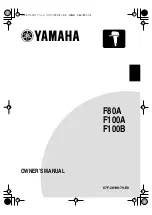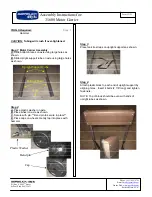
1999 Microchip Technology Inc.
DS30243H-page 21
Chapter 3. Programming K
EE
L
OQ
®
Devices
Figure 3.3: Program Security Device Dialog – HCS200
As seen in the different data sheets, there are a multitude of interdependent
options available to the user. These options are automatically set by the
software to allow the encoder to be compatible with the selected decoder.
3.4
Key Generation
The key generation options and process is described in detail in the Technical
Brief
Secure Learning RKE Systems Using K
EE
L
OQ
Encoders
(DS40144). A
summary is given below.
K
EE
L
OQ
encoder transmissions have two parts. The unencrypted portion
consists of the encoder’s serial number and other status bits such as button
status. The second portion (HOP code) is encrypted and contains information
such as the synchronization counter, counter overflow bits and discrimination
values.
Every K
EE
L
OQ
encoder has its own encryption and decryption key pair. Key
generation has three parts as shown in Figure 3.4 below. The first part, the
manufacturer’s code, is an input to the key generation algorithm. The
manufacturer’s code (64 bits) customizes the key generation algorithm to a
specific manufacturer. This means that if two manufacturers use the same
algorithm, and same source (e.g., serial number of 123) the key pairs
generated will be different. The encoders produced by one manufacturer
won’t be learnable on decoders produced by a second manufacturer and
prevents the cloning of transmitters by competitors. The second part is also
an input to the key generation algorithm. This second part is called the Source
of the key generation. This can either be the encoder’s serial number or the
encoder’s seed. The third part of key generation is the key generation
algorithm.
The algorithm and source are automatically selected when the user selects a
decoder as shown in Figure 3.4. If, as in the HCS512, the key generation
source or algorithm can be changed, the user will be shown the options when
the decoder is selected. This allows the user to select the key generation
method being used in the system.
Содержание PRO MATE II
Страница 2: ...PRO MATE II Device Support DS30243H 1999 Microchip Technology Inc...
Страница 12: ...PRO MATE II Device Support DS30243G1 page 8 1999 Microchip Technology Inc NOTES...
Страница 22: ...PRO MATE II Device Support DS30243H page 18 1999 Microchip Technology Inc NOTES...
Страница 44: ...PRO MATE II Device Support DS30243G1 page 40 1999 Microchip Technology Inc NOTES...
Страница 46: ...DS30243G1 page 42 1999 Microchip Technology Inc PRO MATE II Device Support NOTES...
Страница 47: ...1999 Microchip Technology Inc DS30243G1 page 43 NOTES...















































